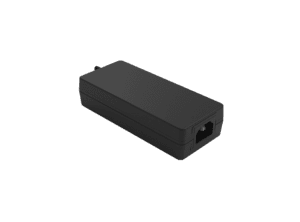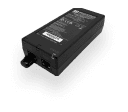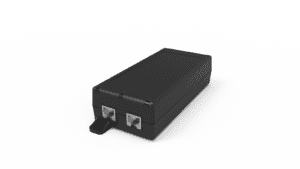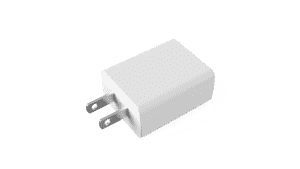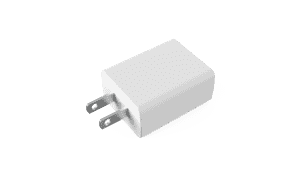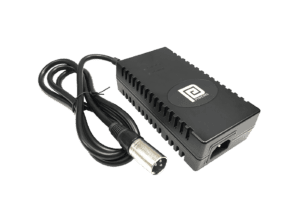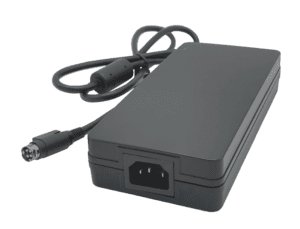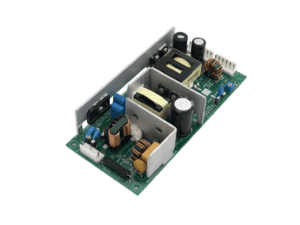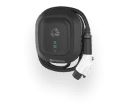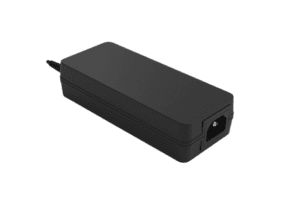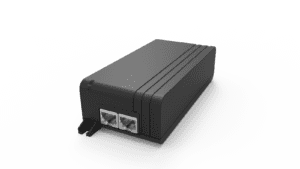BLOG
PoE Injector Explained: A Complete Overview of Power over Ethernet Technology
Table of contents
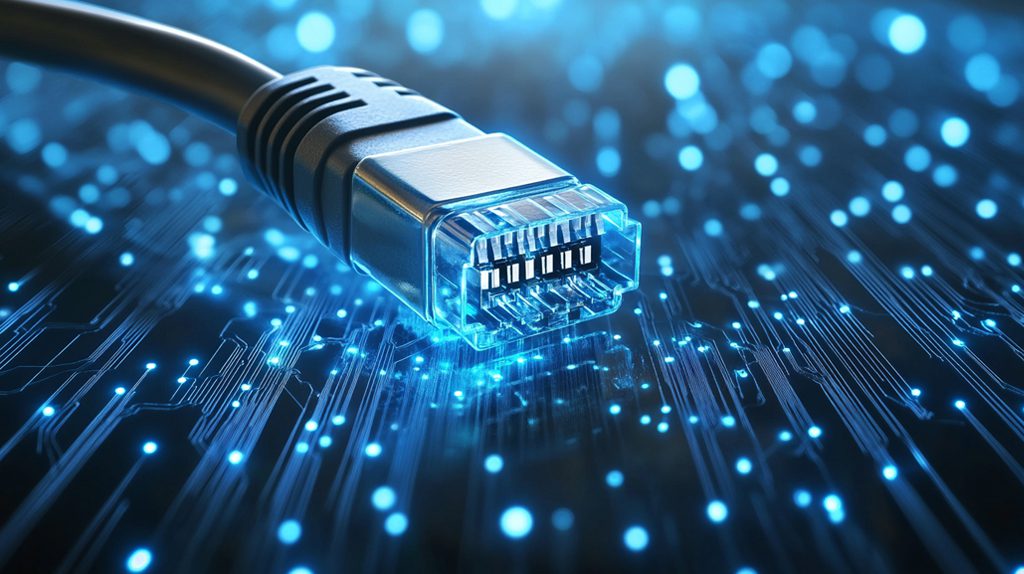
Power over Ethernet (PoE) technology has revolutionized the way we deliver power and data to network devices. By combining these two essential functions over a single Ethernet cable, PoE simplifies network installations, reduces costs, and enhances flexibility. A crucial component in PoE systems is the PoE injector. This article provides a comprehensive overview of PoE injectors, explaining their functions, benefits, and applications across various industries. Phihong USA, a leading provider of OEM and manufacturing solutions, offers a range of PoE injectors designed to meet the diverse needs of modern networks.
What is a PoE Injector?
A PoE injector, also known as a midspan or PoE adapter, is a device that adds power to an Ethernet cable to enable PoE functionality in networks that do not have PoE-capable switches. It injects power into the Ethernet cable, allowing connected devices, such as IP cameras, wireless access points, and VoIP phones, to receive both power and data through a single cable.
PoE injectors are particularly useful in retrofit installations where existing network infrastructure does not support PoE. They offer a cost-effective solution to upgrade networks without the need to replace non-PoE switches.
How PoE Injectors Work
PoE injectors work by taking power from a standard AC outlet and adding it as DC power to the Ethernet cable that carries data from the network switch. This process allows devices connected to the network to receive both power and data over a single Ethernet cable. The injector is placed between the switch and the powered device (PD), injecting power into the Ethernet cable without interfering with the data transmission.
Here’s a step-by-step breakdown of how PoE injectors work:
- Connect the Network Switch to the PoE Injector
Use an Ethernet cable to connect one port of the network switch to the “Data In” port on the PoE injector. This cable will carry only data at this stage. - Power the PoE Injector
Plug the PoE injector into a standard AC power outlet. This provides the electrical power that will be added to the Ethernet cable. - Connect the PoE Injector to the Powered Device (PD)
Use another Ethernet cable to connect the “Data & Power Out” port on the PoE injector to the PD, such as an IP camera, VoIP phone, or wireless access point. This cable now carries both data and power. - Injector Adds Power to the Ethernet Cable
Inside the injector, the AC power is converted to the appropriate DC voltage required by the PD. The injector then combines this power with the data signal on the outgoing Ethernet cable. - Data and Power Delivered to the PD
The PD receives the combined data and power signal through the Ethernet cable. The device separates the power and data internally, using the power to operate and the data to perform its network functions.
That is essentially how you set up a PoE injector. Its simplicity and convenience is unmatched, reducing the need for additional power sources for the PoE-enabled device and cutting the cable clutter.
Types of PoE Injectors
There are several types of PoE injectors, each designed to meet specific network requirements and power needs. The most common types include single-port injectors and multi-port injectors.
Single-Port Injectors
Single-port injectors are ideal for small installations or adding PoE functionality to individual devices. They provide power and data to a single device through one Ethernet cable.
Multi-Port Injectors
Multi-port injectors are designed for larger installations, providing power and data to multiple devices simultaneously. They are suitable for environments with numerous PoE-enabled devices, such as office buildings or industrial facilities.
Key Features and Benefits of PoE Injectors
PoE injectors offer numerous benefits that make them an essential component in modern network infrastructures. They enhance the efficiency, flexibility, and scalability of network installations, providing a cost-effective solution for delivering power and data.
Integrated Power and Data Delivery
PoE injectors integrate power and data delivery over a single Ethernet cable, simplifying network design and reducing installation costs. This integration eliminates the need for separate power supplies and data cables, streamlining the infrastructure and reducing clutter.
Cost-Effective Upgrade
PoE injectors enable the addition of PoE capabilities to existing networks without replacing non-PoE switches. This cost-effective solution maximizes the value of existing infrastructure.
Flexibility and Scalability
PoE systems can easily scale to accommodate additional devices, making them suitable for growing businesses. Multi-port injectors allow for easy scaling of PoE networks by supporting multiple devices. The flexibility in design also allows for easy relocation and addition of devices as needed.
Non-Disruptive Installation
PoE injectors can be added to existing networks without significant changes to the infrastructure, minimizing downtime and disruption during installation.
Reduced Installation Costs
PoE installations can often be completed by network technicians, who generally charge less than electricians.
Best Practices for Using PoE Injectors
Implementing best practices when using PoE injectors ensures optimal performance and longevity of the network. By following these guidelines, businesses can maximize the benefits of PoE technology and maintain a reliable and efficient network infrastructure.
Choose the Right Injector
Select a PoE injector that is compatible with the power requirements of your connected devices to ensure optimal performance. Consider both current and future needs to choose an injector that can handle potential network expansions.
Proper Placement
Install the PoE injector in a location that minimizes cable lengths and optimizes network performance.
Use Quality Cables
Invest in high-quality Ethernet cables to minimize power loss and ensure reliable performance.
Monitor Power Usage
Use network management tools to monitor the power consumption of PoE devices and ensure efficient operation. Regular monitoring helps identify potential issues before they impact network performance.
Regular Testing
Test the PoE injector and connected devices regularly to ensure reliable power delivery and network performance.
Regular Maintenance
Conduct regular maintenance checks to ensure that PoE injectors are functioning correctly and delivering the required power.
CLIENT'S QUOTE
Phihong's Power-Over-Ethernet solutions have transformed our network, boosting efficiency and reducing costs. Their seamless integration has simplified both installation and maintenance.
Applications of PoE Injectors in Various Industries
PoE injectors are versatile tools that support a wide range of applications across various industries. Their ability to deliver power and data over a single cable makes them ideal for numerous use cases.
Manufacturing
In manufacturing environments, PoE injectors are used to power industrial automation equipment, sensors, and security systems. They enable efficient data collection and process monitoring by powering devices such as robotic arms, conveyor belts, and environmental sensors. This helps streamline operations, improve productivity, and enhance workplace safety.
Retail
Retail environments use PoE injectors to power digital signage, security cameras, lighting, and point-of-sale (POS) systems, optimizing store operations and improving customer experience.
Hospitality
In the hospitality industry, PoE injectors are utilized to enhance guest experiences through the deployment of smart lighting systems, access control systems, wireless access points, and in-room automation and entertainment systems. They also support security measures by powering surveillance cameras throughout the premises.
Corporate Offices
Corporate offices benefit from PoE injectors by powering security cameras, VoIP phones, intercom systems, lighting systems, wireless access points, and conference room technology. This setup streamlines network management and reduces the clutter of multiple power cables, leading to a more organized and efficient workplace.
Public Infrastructure
PoE injectors play a crucial role in public infrastructure by supporting smart city applications such as street lighting, traffic management systems, environmental monitoring systems and public Wi-Fi hotspots. These applications rely on PoE injectors for reliable power and data transmission, enhancing urban living standards.
Telecom / Datacom
In the telecom and datacom sectors, PoE injectors are essential for powering, routers and other communication devices. They facilitate seamless data transmission and network connectivity, ensuring that communication systems remain robust and efficient.
By leveraging PoE injectors, these industries can achieve greater operational efficiency, improved security, and enhanced user experiences through the reliable delivery of power and data.
Advanced PoE Injector Management and Monitoring
Effective management and monitoring of PoE injectors are essential for maintaining network performance and reliability. Advanced features, such as SNMP, provide administrators with powerful tools to oversee and manage the power and data flow to connected devices. These capabilities ensure optimal operation, quick issue resolution, and enhanced overall network efficiency.
Real-Time Monitoring
Advanced tools provide real-time data on power usage, helping to identify and address issues quickly. Administrators can monitor the status of a PoE injector and its attached PoE-enabled devices, receiving alerts about issues such as power overloads or device failures. Real-time monitoring ensures efficient power management and helps prevent potential problems by providing detailed information on device health, power usage, and network activity.
Proactive Management
Efficiently allocating power to devices based on their needs prevents overloads and enhances network performance. An SNMP-enabled PoE injector further enhances functionality by allowing technicians to remotely reset or power-cycle a device if it becomes unresponsive. Proactive power allocation optimizes energy use and supports reliable operation, ensuring quick issue resolution and maintaining network efficiency.
Enhanced Safety Features
Safety features such as short circuit, overload protection and temperature monitoring help prevent equipment failure and ensure safe operation. Advanced management and monitoring capabilities allow administrators to receive alerts about potential issues, helping them take timely action to protect both the network and connected devices from potential damage. Enhanced safety features safeguard the entire system, contributing to reliable and secure network performance.
Top Features and Benefits
- Optimized Network Performance: Advanced management tools enhance network performance by providing real-time insights and proactive management capabilities. Administrators can monitor the status of SNMP-enabled PoE injectors and their connected devices, receiving alerts about issues such as power overloads or device failures.
- Improved Safety: Safety features, including overload protection and temperature monitoring, ensure the reliable and safe operation of PoE injectors and connected devices. These features help prevent equipment failure and protect the network from potential damage.
- Efficient Power Allocation: Efficient power allocation optimizes energy use, reducing waste and enhancing network efficiency. SNMP-enabled PoE injectors allow for remote reset or power-cycling of devices, further supporting efficient and reliable network operation.
Best Practices
- Regularly Monitor Power Usage: Use real-time monitoring tools to keep track of power consumption and identify any irregularities. Monitoring provides detailed information on device health, power usage, and network activity, ensuring efficient power management.
- Implement Overload Protection: Ensure that PoE devices and power sources have built-in overload protection to prevent overheating and equipment failure. Proactive management helps in maintaining network performance and safety.
- Conduct Safety Inspections: Regularly inspect the network to ensure all components meet safety standards and are functioning correctly. Enhanced safety features and proactive monitoring contribute to a secure and reliable network environment.
Future Trends in PoE Technology
As PoE technology continues to evolve, new trends and advancements are emerging that will further enhance its capabilities and applications. These trends include integration with sustainable technologies and support for smart and IoT devices.
Integration with Sustainable Technologies
Combining PoE with renewable energy sources and energy-efficient technologies supports sustainable and cost-effective network infrastructure.
Support for Smart and IoT Devices
As smart and IoT devices become more prevalent, PoE technology is evolving to provide reliable power and connectivity for these advanced applications.
Top Features and Benefits
- Sustainability: Integration with sustainable technologies supports environmental goals and reduces operational costs.
- Future-Proof Solutions: Evolving PoE standards and technologies ensure that PoE networks can support future advancements and applications.
Best Practices
- Stay Informed on Advancements: Keep up-to-date with the latest developments in PoE technology to leverage new capabilities and features.
- Invest in Scalable Solutions: Choose PoE solutions that can grow with technological advancements and future applications.
- Incorporate Sustainable Practices: Integrate PoE with renewable energy sources and energy-efficient technologies to create a more sustainable network infrastructure.

Contact Our Team Today!
Our dedicated sales team and international partners are prepared to support you with your latest projects and initiatives globally.
Explore More with Phihong USA
As we conclude our exploration of PoE technology, it’s clear that this field is experiencing unprecedented growth. For over 50 years, Phihong has been at the forefront of innovation, serving Fortune 500 companies across various industries as a leading power supply manufacturer for OEMs.
Phihong’s leadership, particularly in advanced technologies like Power over Ethernet, extends to active contributions in the development of IEEE PoE standards. This involvement underscores our commitment to innovation and dedication to providing cutting-edge power solutions that will shape the future of technology.
In addition to custom power supply solutions, Phihong offers a diverse range of products, including:
- Power over Ethernet (PoE) Solutions: PoE injectors, splitters, media converters, and more
- AC/DC Adapters and Power Supplies: USB adapters, desktop adapters, industrial-grade power supplies, and more
- Battery Chargers: Chargers for lithium-ion and lead-acid batteries
- Medical Power Supplies: Specialized power supplies that meet stringent healthcare requirements
By partnering with Phihong USA, you are choosing a trailblazer in power technology. If you’re an OEM looking for a custom PoE solution or just looking for a quality product, call us today: 510-445-0100 or email us at usasales@phihongusa.com. We look forward to collaborating with you.
FAQ
What are the primary benefits of using PoE injectors?
PoE injectors offer several key benefits, including cost-effective upgrades to existing networks, easy installation, and flexibility. They enable businesses to add PoE capabilities without replacing non-PoE switches, making it a budget-friendly option. PoE injectors are typically plug-and-play, requiring minimal setup and configuration, which simplifies the deployment process. They also support various PoE standards, ensuring compatibility with a wide range of devices. This versatility makes PoE injectors an excellent choice for businesses looking to enhance their network infrastructure with minimal disruption and cost.
How do PoE injectors work?
PoE injectors work by taking power from a standard AC outlet, converting it to safe DC power and adding it to the Ethernet cable that carries data from the network switch. This process allows devices connected to the network to receive both power and data over a single Ethernet cable. The injector is placed between the switch and the powered device (PD), injecting power into the Ethernet cable without interfering with the data transmission. This setup enables the seamless integration of PoE functionality into existing networks, providing a simple and efficient way to power network devices.
What are the different types of PoE injectors?
There are several types of PoE injectors, each designed to meet specific network requirements and power needs. The most common types include single-port injectors and multi-port injectors. Single-port injectors are ideal for small installations or adding PoE functionality to individual devices. Multi-port injectors provide power and data to multiple devices simultaneously, making them suitable for larger installations. High-power injectors, compliant with the IEEE 802.3bt standard, deliver higher power levels to support devices with significant power requirements, such as high-performance wireless access points and IP cameras with PTZ capabilities.
How can PoE injectors enhance network efficiency?
PoE injectors enhance network efficiency by simplifying the infrastructure and reducing installation costs. By delivering power and data over a single Ethernet cable, PoE injectors eliminate the need for separate power supplies and cabling, streamlining network design and reducing clutter. This simplification leads to more efficient and manageable networks. Additionally, PoE injectors enable easy relocation and addition of devices, providing flexibility in network design and supporting business growth and technological advancements.
What are the best practices for using PoE injectors?
Best practices for using PoE injectors include selecting the right injector based on the power requirements of connected devices, monitoring power usage, and conducting regular maintenance checks. Ensuring compatibility between the PoE injector and network devices is crucial for optimal performance. Using high-quality Ethernet cables minimizes power loss and ensures reliable performance. Implementing power management tools helps monitor power consumption and ensures efficient distribution. Regular maintenance checks ensure that PoE injectors are functioning correctly and delivering the required power, supporting reliable and efficient network operations.

